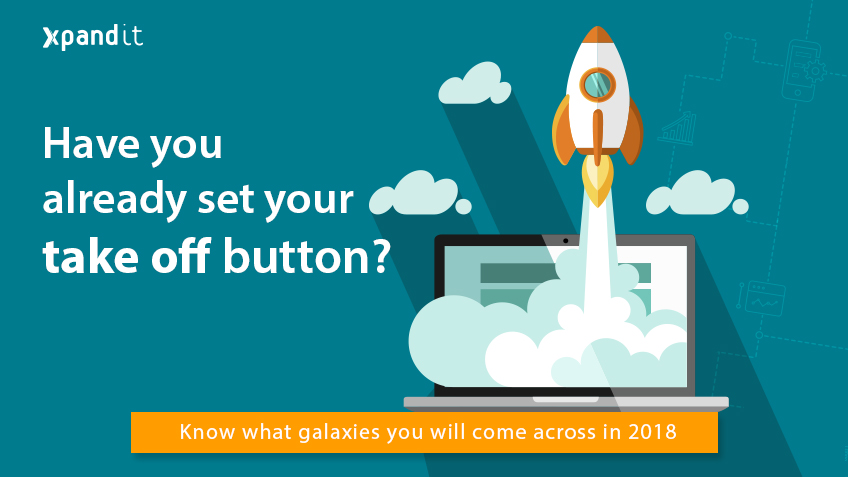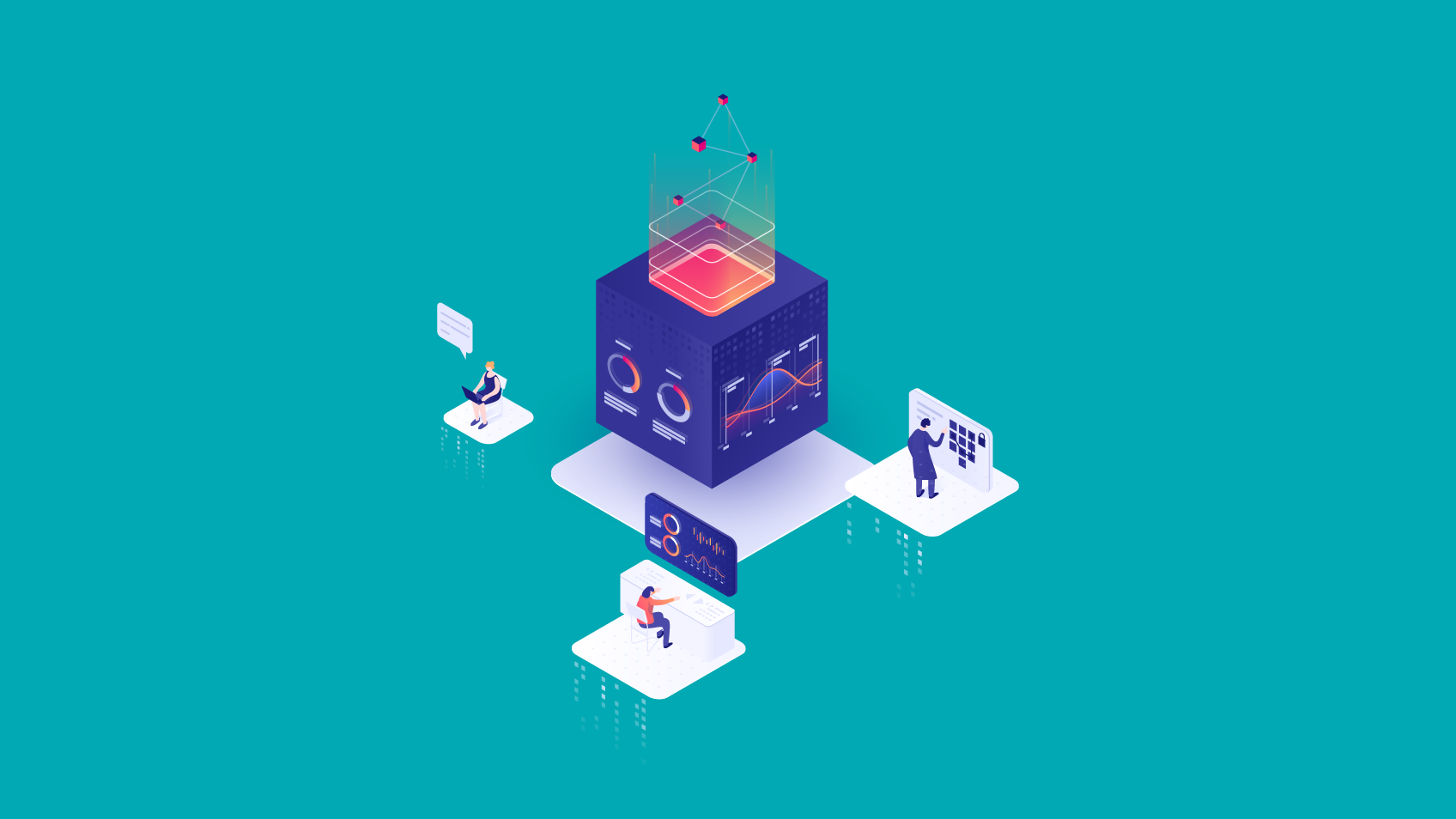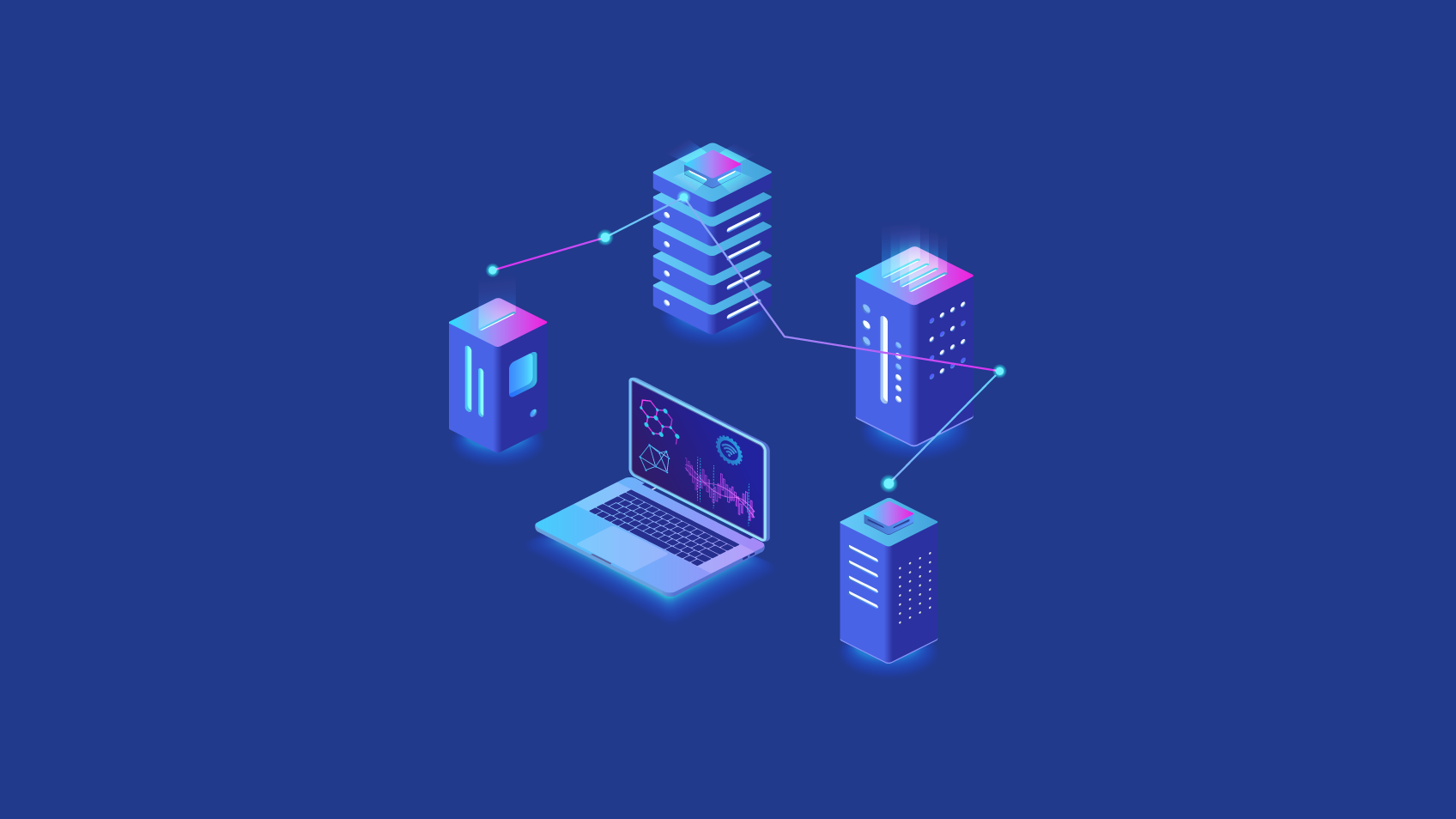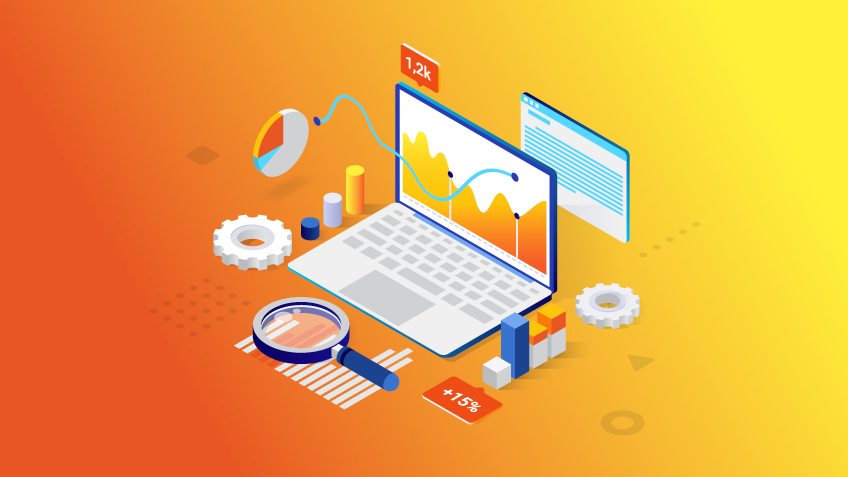Digital transformation is on its way, and companies need to understand what to adopt and what to invest in. Here are some of the 2018 tech trends that you can use as guidance for your business.
So, is your launch button ready? Discover what galaxies you will come across in 2018.
1. AI as a Decision Maker
We all know by now that AI is seeping into our lives through almost every technology we use. However, it is expected that this tendency will continue to grow and becomes a reality in every new platform, app or device. But for 2018, the trend is the ability to use AI in the decision processes for many business areas, to enhance customers’ experiences and to reinvent business models. Artificial Intelligence allows us to optimise a specific task, through complex algorithms, and help us get to better conclusions due to the highly scoped machine learning solutions implemented, reducing poor insights. So, it is expected that companies will continue to invest in data scientists to improve the quality of decision making.
According to IDC, by 2018, 20% of major retailers will use AI to personalise the brand experience from awareness through to purchase; according to Gartner, 41% of organisations have already made progress in piloting or adopting AI solutions.
2. AR/VR in your Business Meetings
Virtual & Augmented Reality are no longer a thing of the future and will soon change the way we do business. According to Gartner, the best aspect of VR and AR, from the standpoint of workplace productivity, is its borderless feature. Companies can use a single instructor to teach new employees or connect team members that are spread around the world in a virtual conference room. These technologies ensure natural interactions that would never be possible with a phone call or a video conference by allowing natural body language for communication.
Also, by being constantly connected to the internet through our vision, the necessity to produce and share information will increase exponentially. During 2018, we could be looking at the turning point where, with eye tracking technologies, immersive experiences and geolocation gain a lot more power.
3. Augmented Analytics is the Future
Augmented analytics is for certain a new wave that will disrupt the market in the very near future. Business Intelligence tools have become more and more easy to use and self-service oriented. However, alongside the increasing progress are increasing volumes of data, growing day by day.
So, this development in self-service BI tools can benefit from machine learning automation to augment human intelligence and contextual awareness, to simplify the process from data to insight, to take action and to impact in your business, across the entire data and analytics pipeline. Augmented analytics will be essential to avoid biased decisions and to deliver significant conclusions as fast as possible.
According to Tableau, “The utility of these types of smart capabilities has proven useful in assisting with data preparation and integration, as well as for analytical processes such as the detection of patterns.”
4. GDPR has Come to Stay
On May 25th, the General Data Protection Regulation (GDPR) will mark one of the most significant changes to data protection since the Data Protection Act. This change will reshape the way organisations across Europe approach data privacy and take better care of their data, particularly when it comes to oversight.
Any company that stores, or processes in any way, personal information about EU citizens within EU states will be affected by the rule changes in some way, even if they do not have a business presence within the EU. The most important rights to take note of include the following:
- Consent must be given for data processing, and the way that the data is used must be stated in a way that any person can understand.
- Companies must make it clear what data is being processed, how is it handled and with what other companies the data will be shared.
5. Demand for Digital Centralisation
We have smart devices for everything: smartphones, smart TVs, smart watches, smart washing machines… and for each smart appliance, we have an app to control it. So, for 2018, people are demanding digital centralisation: a device or an app capable of managing all the existing ones. Technology has come up with something that might be part of a solution: smart speakers (or virtual assistants), as, for example, the Amazon Echo or the Google Home, that can be an excellent aid to managing all our smart “things”.
These are definitely a step in the right direction. Let’s see what 2018 will bring in that field.
6. Conversational Platforms Evolution
The fact is that conversational interfaces will someday revolutionise how humans relate to machines. Currently, these technologies can answer simple questions as well as perform more complicated interactions, such as signing you up for webinars. However, the rise of platforms such as Google Now, Siri and Cortana are going further, and the prospect is that these platforms will continue to evolve and will shortly be capable of performing even more complex actions.
According to Gartner, the fact that they don’t rely on typed out text may represent a challenge since “users must communicate in a very structured way, and this is often a frustrating experience”. Therefore, their central differentiating element will be the sturdiness of their conversational models and the API.
7. UI Revisited
Designing with UI in mind will continue to be a top priority in 2018. Designers will have to rethink and reconsider the way we interact with our apps and technological devices, due to the decrease of desktop utilisation and the use of smart speakers. Forbes predicts the next generation of UI will have to include new types of visuals and more audible clues, and that consumers will adapt quickly to these innovations.
Also, expect to see full-screen images and full-screen videos on many websites because these trends allow for greater user engagement.
8. IoT: What For?
During 2017 we have seen a significant investment in IoT, with several industries financing consumer products, like wearables and connected electronics, and, of course, IoT will be one of the major drivers of the digital transformation in 2018.
Business models will experience the winds of change, as well as work processes, augmenting productivity and consumer experiences. In fact, IoT pops up in many of the trends above: augmented analytics, digital centralisation, AI, VR/AR, etc. What matters most is not the things connected to the Internet, but what we do with those things.
Besides that, one of the major IoT trends is the integration with Blockchain, which will probably make its big entrance into the market in 2018. It will improve security transactions and the supply chain. According to IBM, “A blockchain is a highly secure way of recording transactions and contractual agreements.” It’s a simple way of recording transactions in a digital ‘block’, linked to records of other operations to form a chain. Companies can use a blockchain to record exchanges of money, store contractual agreements or even document the way goods move through a supply chain.














